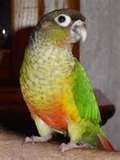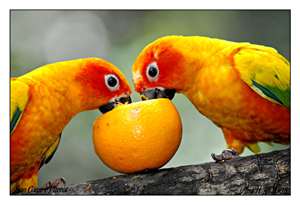
PARROT RESCUE
CONURE PARROT
The conure parrot is a populur pet
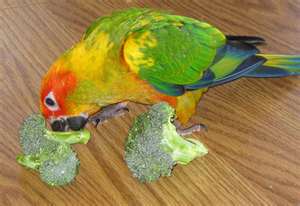
| HOME |
|---|
| SPECIES |
| REHOMING |
| LOST |
| FOUND |
| LINKS |
| FOR SALE |
| EMERGENCY |
| HELP |
Just remember that the information here is general information. The personality and temperament of each bird depends on how the breeder cared for it, and how the owners have cared for it.
Conures are always on the go.
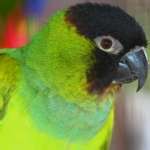
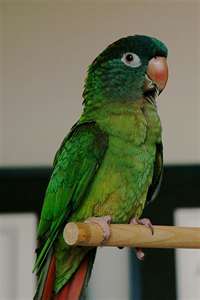
DIET & NUTRITION
A variety of food is essential for providing the best possible care for your parrot.
A pellet based diet is the best thing for your parrot but this must be supplimented with foods like:
Carrots, Broccoli (calcium),Peppers, Celery, Cucumbers and Leaf lettuce (not iceburg)
Melons, Kiwi, Grapes, Oranges and Berries
No No Foods
Alcohol, Coffee and Caffein, Chocolate, Avocado, Mushrooms, Onions, Rhubarb and High Fat foods
HEALTH AND BEHAVOIR
|
One of the most affordable types of conures is the Nanday. This bird is green with a black head and falls in the middle of the size range. Nandays are among the loudest conures, but they are quite good talkers if you can handle the noise. You may want to look elsewhere, though, if you live in an apartment or townhouse.
Two more conures on the lower end of the price range are Maroon Bellies and Green Cheeks. Both are among the quietest and smallest of the conure family. The Maroon Belly is a bit more rare and not as friendly as the Green Cheek.
Green Cheeks and Maroon Bellies resemble each other so much that experienced bird handlers sometimes have trouble telling them apart. In addition to having maroon tails, the Green Cheek has more green on it’s chest than the Maroon Belly. These birds can be taught to talk, but only a few words or phrases. The fact that they are not overly vocal makes them a good choice for those who live in apartments.
CAGE
Because Conures are so active and playful, they need a roomy cage. The larger the better, to hold all the toys they need to burn off all their energy.
They need lots and lots of toys for parrots and they need to be rotated out so they don’t get bored.
A large cockatiel cage will do for a small conure, but I feel you should have a minimum of an 18x18x24 for a larger conure and that is if it will have plenty of "out" time. If they are going to be home alone all day consider a larger cage, they need enough room for a variety of parrot toys and room to swing and play between them. A 24x22x29 or larger cage would be great.
Consider getting a cage with a playpen on top for your conure to play on when you are home. The more room they have the happier they will be.
Some will argue with me and say that they should be in a small cage so that they will be happy to get out and play with you
If your family becomes its flock, because you are spending quality time with it, the bird will want to come out and be with you. A large cage will not change his love for you in my opinion.
VITAMIN A
The most obvious sign of a vitamin A deficiency is a feather stain above the cere. The staining of the feathers above the nostrils reflects a discharge from the nostrils. Subtle differences may be seen as far as the color intensity of the cere and feathers is concerned - and the overall condition of the plumage. A bird deficient in this vitamin may have pale, rough-looking feathers that lack luster. The cere may look rough instead of smooth, and you may see an accumulation of a yellow dry scale on the sides of the beak.
Vitamin A occurs naturally in dark leafy greens and orange-colored produce, such as apricots, cantaloupes, carrots, red peppers, pumpkins and sweet potatoes. To resolve Vitamin A deficiency, try adding foods like sweet potatoes (either cooked or steamed until soft), mashed up with other fruits will be both loved by your pet bird, as much as it is good for her or him. Many birds also enjoy fresh carrot juice - or try offering shredded carrots. Natural sources are preferable over synthetically produced nutrients, which may not be absorbable and could easily be overdosed).
